Hello!
The controversy over the best camera in smartphones continues. How many people, so many opinions. Manufacturers only add fuel to the fire by reporting on the latest matrices, lenses, etc.
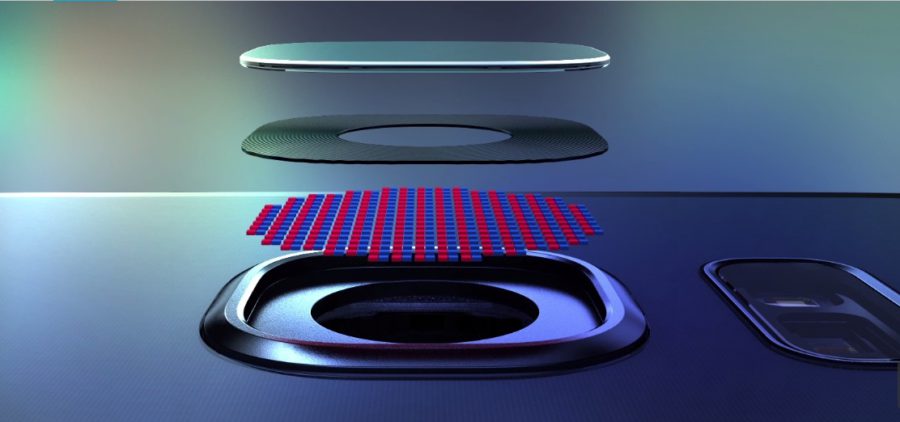
However, very often there is a situation where the same hardware in smartphones from different manufacturers behaves completely differently. Why? The answer is obvious – software. At the moment, not only the hardware component is important, but also the software that will work with this very hardware.
It is not uncommon for a device to perform better and faster than a more sophisticated competitor, having very modest characteristics in terms of hardware. You don't need to go far for an example, take at least the good old Nexus 5, the camera in which had a modest 8 megapixel, however, thanks to the use of proprietary HDR + technology from Google, it shot great.
Until recently, it was not possible to evaluate HDR + performance on the devices of the main competitors. But, thank God, this bastion fell. A craftsman with w3bsit3-dns.com managed to get the HDR + algorithm to work on third-party resources, and we had the opportunity to compare what result a Google camera will give in comparison with software from other manufacturers.
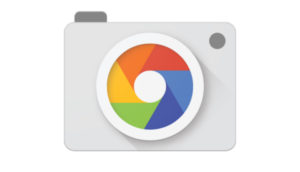
This question has interested me for a long time. And the reason for this interest was the situation that I faced after the release of the Galaxy S7. Before buying this phone, I used the Moto Nexus 6, which, having a 13MP camera and a much lower light sensitivity than the SGS7, turned out to be not much worse for photographing. At that time, it surprised and upset me at the same time. However, it was not possible to compare these devices directly. Moto Nexus 6 ended its days tragically – the screen finally and irrevocably crashed, and given the cost of the new module, the repair was unprofitable. Besides. there were reviews of great cameras of the next generations of the Nexus line, but somehow it turned out that they passed me by. And the comparison of cameras in this case was a comparison of a bundle of hardware and software and not just one thing.
And now it is possible to test the effectiveness of the HDR + algorithm on the same hardware. At the moment, devices based on Snapdragon 820, 821 and 835 processors are supported. Sparsely, but better than nothing. In my case, a Galaxy S7 released for the USA, on a Snapdragon 820 processor.
Alas, I cannot give links to this very program for obvious reasons – 'warez'.
However, everything is very easy to google and look for on w3bsit3-dns.com. As the saying goes, he who seeks will always find.
Comparison
In the cameras of Samsung smartphones, I was always confused by one detail – a very aggressive noise reduction, which smeared details and concealed some elements. Despite this, brightness and contrast did their job – many publications gave the next Galaxy camera a place in the top three. Let's compare the quality of the software from Samsung and from Google directly by installing a camera from Google (software part) on the Galaxy S7.
I took several pictures and the result puzzled me.
For the purity of the experiment, in both cases, full automatic and forced HDR (HDR + for Google) is turned on.
Left stock Samsung camera, right Google. Smartphone without 'root' and modifications. Below the main images there will be cropped images of the same photos, as well as links to the originals of the photo, so that you can compare them yourself.
Let's start with general plans:
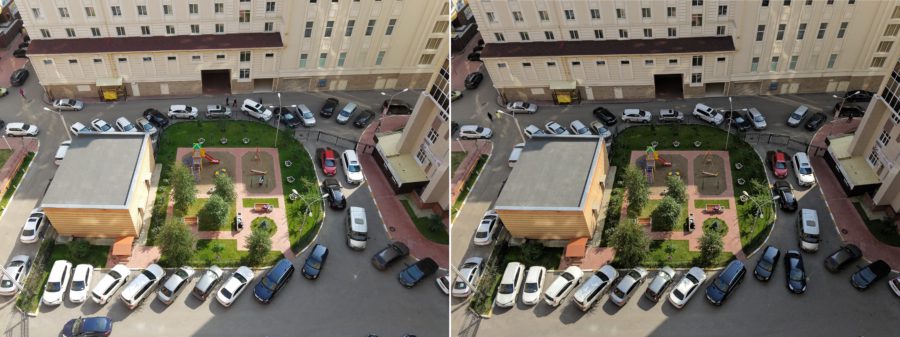
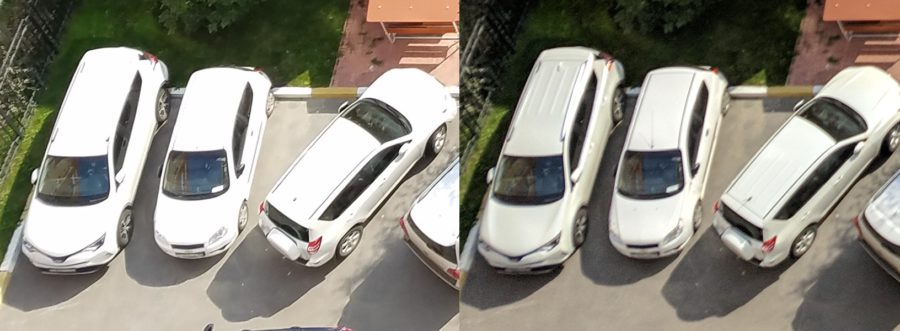
Original Samsung / Original Google
The expectedly brighter shot was taken by the Samsung camera, while the Google camera got a more realistic frame, more close to the picture I saw with my own eyes. This overexposure of the picture will be encountered more than once. The roofs of the cars turned into a white thing without elements and relief, and the asphalt lost its texture. At the same time, the overall sharpness of the frame is higher with the Samsung camera.
Next up is the macro in good lighting. The shooting angle is slightly different here, so the cat's face seems to be a slightly different shape, but this is not a camera, I was holding the camera a little differently.
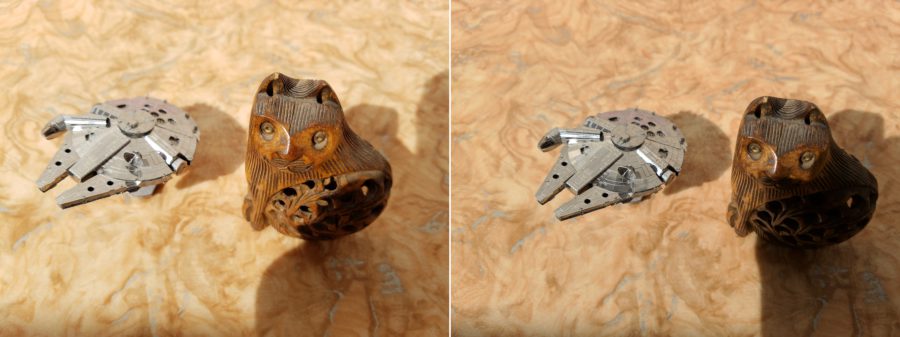
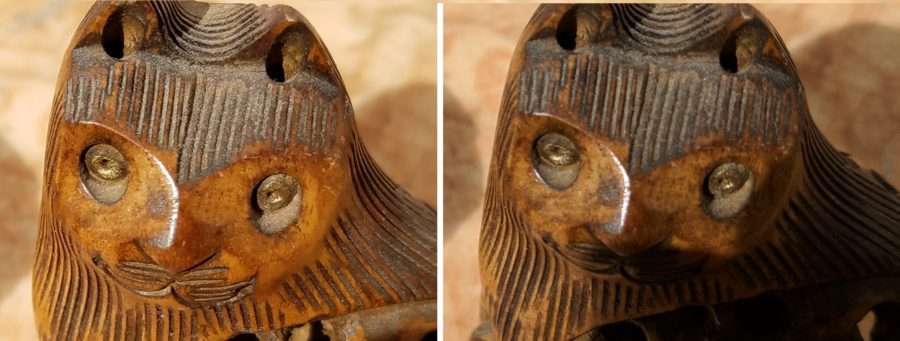
Original Samsung / Original Google
Samsung gave a sharper, brighter frame, but again lied with colors. The color of the figure is the same as on the right. At the same time, the camera from Google focused on the frame, while Samsung focused on the cat's face. A photo from a Samsung camera makes the best impression exactly until you see it compared to Google's result. With the overall high detail and sharpness of Samsung, distorted colors spoil everything.
Now macro with more complex lighting and materials. (no crop).
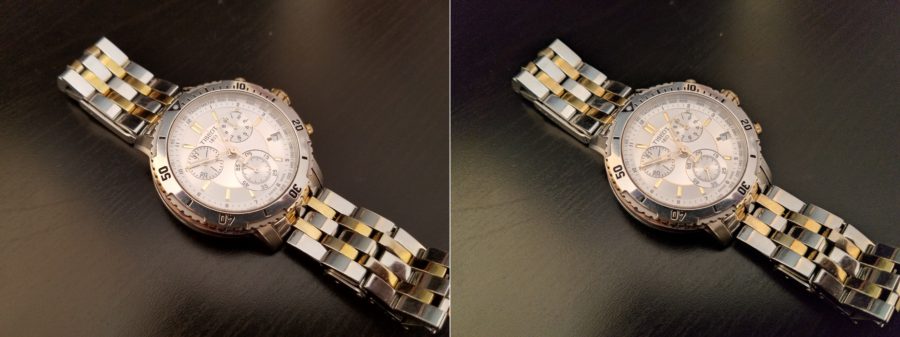
Original Samsung / Original Google
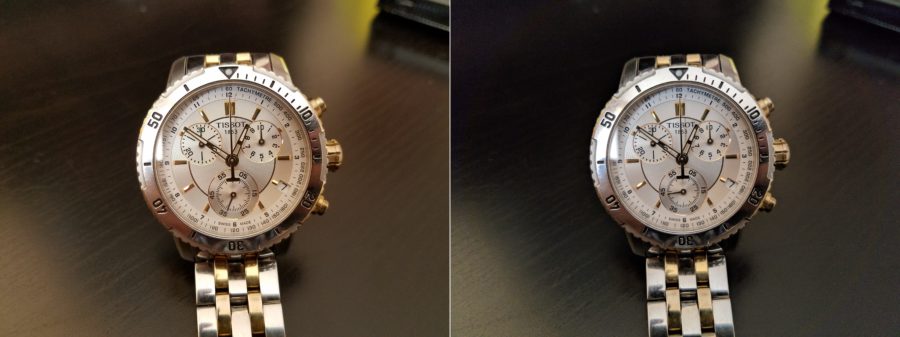
Original Samsung / Original Google
In reality, the table is coal-black and the watch case is silvery with gold inserts, not yellowish. Samsung's problem is that almost all photos come out with the effect of an advertising brochure – too bright, too contrasting, too striking. And also, noise reduction of the Samsung camera has covered up almost all the scratches on the bezel on the right.
Now it is difficult for most cameras to photograph. There are many small monochrome objects. Many cameras make a frank mess of leaves. Let's see how Samsung and Google do it.
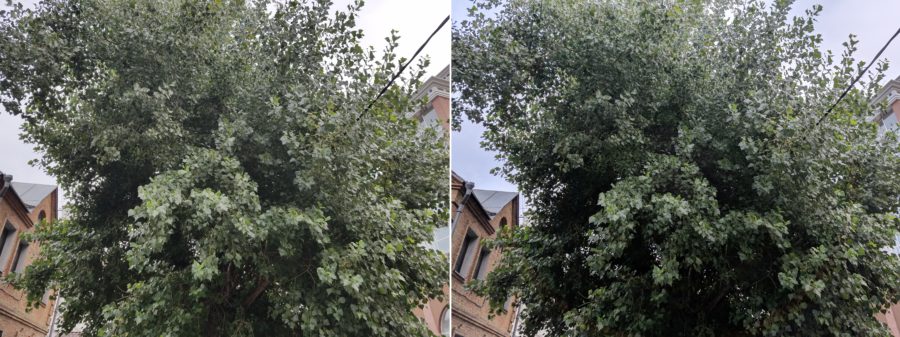
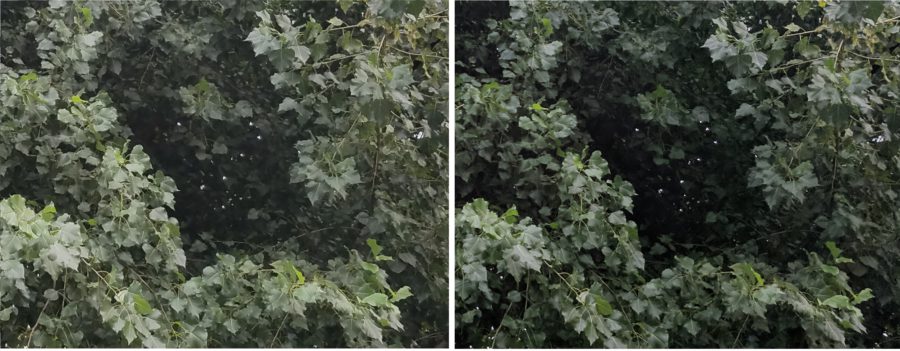
Original Samsung / Original Google
And again the overexposed sky. At the same time, the foliage is worked out better.
And now the backlight.
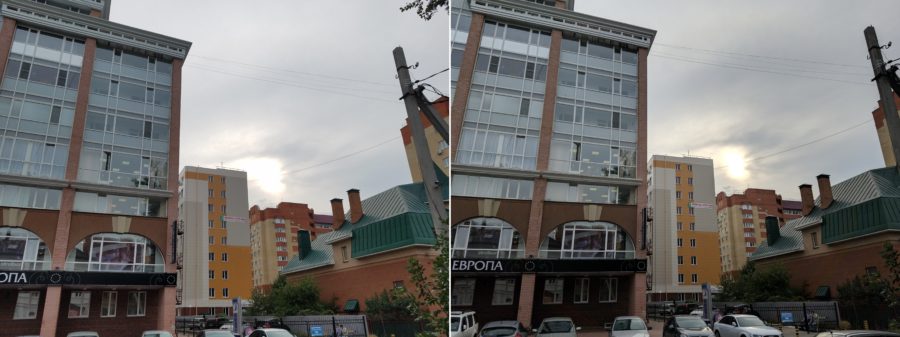
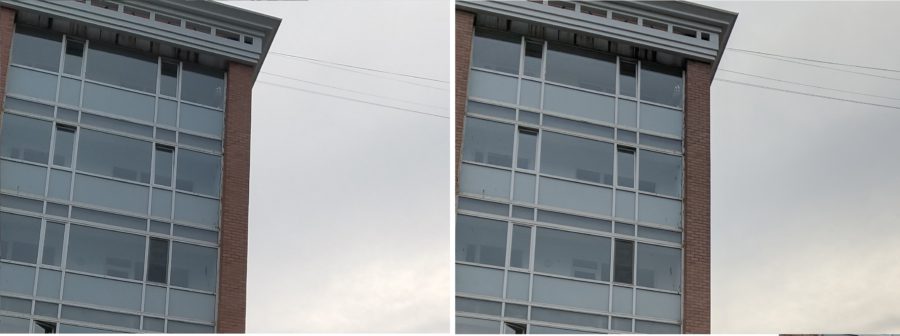
Original Samsung / Original Google
Nothing changes. Too much light and loss of detail on the Samsung camera. Pay attention to the brickwork – Samsung greased it safely. The clouds have also lost their detail and texture.
And a few more photos in various conditions.
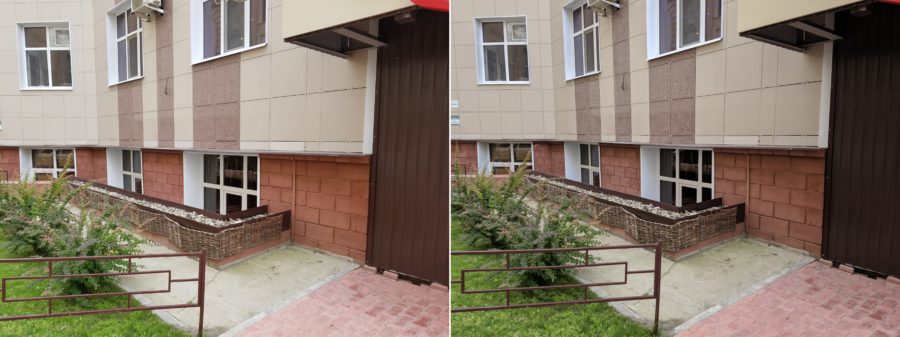
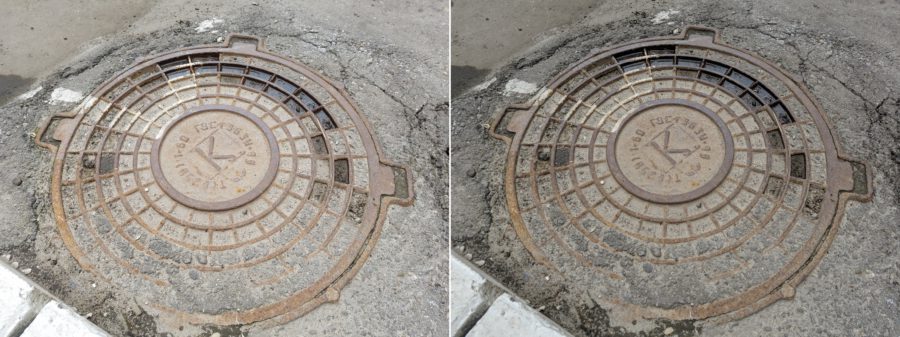
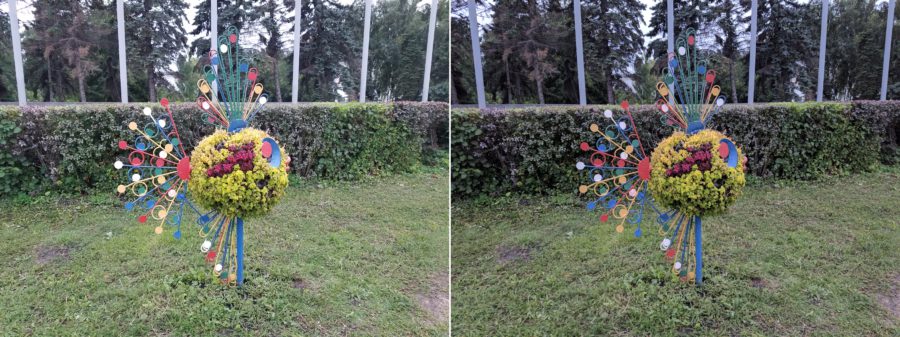
Samsung Originals / Google Originals
Photos taken with a Samsung stock camera continue to delight with a festive picture even where it is not and should not be.
And here is another photo with a complex element – a lattice. Let's see how different software can cope on the same hardware.
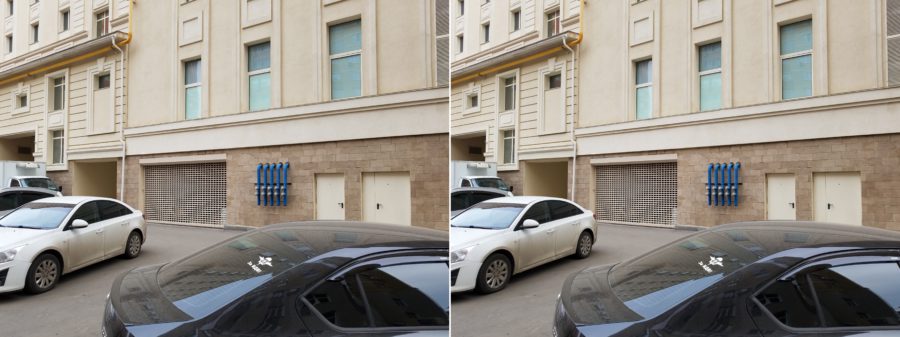

Original Samsung / Original Google
Surprisingly, Samsung won with a clear advantage. Even at higher magnification, the picture did not disintegrate and turned out to be clearer and more detailed.
Conclusion
Programmers who write software for cameras in Samsung smartphones are famous for their love of aggressive noise reduction, under the influence of which photos lose details that are blurred for the sake of smoother images. This is bad, but the results often pay off. Remember how often you meticulously examined your photos, for example, from vacation, enlarging them by 200-300% and looking for places with blurry elements? And also, out of two similar pictures, many will choose the one that is brighter and more contrasting – this is how the human psyche is arranged, which, apparently, is well understood at Samsung.
So it turns out that a brighter, more contrasting picture is becoming the norm, displacing realism. Good or bad, it's up to everyone to decide for themselves. Yes, there is a certain percentage of people who will immediately notice distorted colors and overexposed areas, but there are not many of these among the total number of smartphone owners. Think, are there many professional photographers among us? And smartphones are not made for them. There is a special technique for professionals.
As a result, my smartphone will definitely have a Google camera, but not instead of, but in addition to the stock camera.
